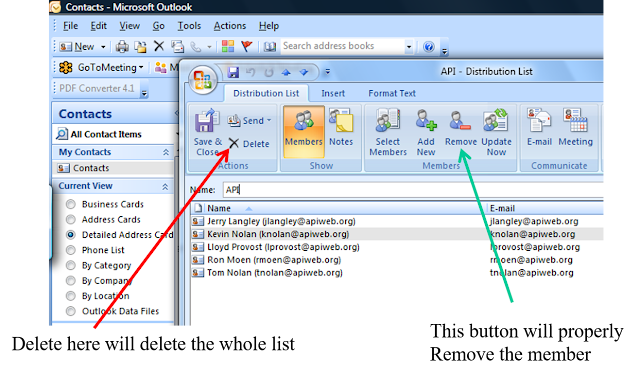Designing Structure to Help People
Prevent Errors
Are we making
slips or mistakes?
Dr. Donald
Norman (1988) presented two fundamental categories of errors that
people make while interacting with work processes and systems:
- Slips: …result from automatic behavior, when
subconscious actions that are intended to satisfy our goals get waylaid en
route.
- Mistakes: …result from conscious deliberations
Norman warns us that the same mental
processes that make us creative and
insightful by allowing us to see relationships between apparently unrelated
things, that let us leap to correct conclusions on the basis of partial or even
faulty evidence, also lead to error.
Slips
All of us
experience making slips each day. In fact the more skilled we are the more
prone we are to simple slips. For example, when learning how to drive, we
usually do not pull out in front of another vehicle without really paying
attention. All of us as skilled drivers have probably experienced the horror of
looking quickly and then pulling from the curb and almost being hit by another
driver. People learning to drive will look two or three times, paying great
attention and then only pull from the curb when the “coast is clear.” Slips are
almost always small things and can be readily fixed. They are generally more
embarrassing than dangerous. Norman has defined six types of slips:
- Capture errors
- Description errors
- Data-driven errors
- Associative activation errors
- Loss-of-activation errors
- Mode errors
Capture Errors - A frequently done activity suddenly takes charge instead of the one you
intended. The capture error usually happens when two different actions
sequences have their initial stages in common. For example, it is a nice
Saturday morning and your spouse asks you to drive to the store and pick up
some orange juice for breakfast. You pull out of the driveway and start on your
journey. The next thing you know you are pulling up to park at your workplace!
The routine of driving to work has captured
your intended action of driving to the store.
Description Errors - The intended
action has much in common with others that are possible. As a result, unless
the action sequence is completely and precisely specified, the intended action
might fit several possibilities. For example, many of us who travel a lot have
had the experience of coming from a client meeting, finding our rental car and
then after some difficulty of attempting to get into the car, find we have the
wrong car. Apparently, Ford has made several white Ford Taurus vehicles. Much
to our embarrassment, we then start looking for the car we rented that morning.
Associative Activation Errors
As we have noted, external data can
trigger actions. Internal thoughts and associations can also lead to slips. For
example, while watching TV the telephone rings on the show I am watching; not
realizing the telephone ring is from the television show, I pick up my own
phone and greet a dial tone! Associative activation errors can also come from
associations between thoughts and ideas.
When we are in a social situation and are thinking we should not say
something that might be inappropriate, and then to our shock and surprise we
say it!
Loss-Of-Activation Errors
Many of us have committed this error and
attributed to ourselves that age must be taking it toll on our mental
abilities. Lack-of-activations errors occur because the presumed mechanism --
the activation of the goals, has decayed. For example, we walk from one room to
another. Finding ourselves in the room, we are suddenly struck with the
reality; why are we in this room? Looking around frantically, we cannot
remember why we made the trip. We then go back to the room from whence we came
to be “activated.” Looking around, we suddenly remember and then will renewed
determination return to the other room to complete the action.
Mode Errors
Mode errors occur when devices have
different modes of operation, and the action appropriate for one mode has
different meanings in other modes. For example, on Microsoft Outlook I can make
distribution lists to send certain types of communication to identified groups
of people. A fantastic time saver! Periodically, I find it necessary to edit
this list. When I select the entry to be deleted, I read from left to right and
find the delete button and click. To my surprise, I have now deleted the entire
list! The correct button is further to the right under “Members.” See Figure 1 for the example.
Figure 1: Mode Error Example on Outlook
In the next installments of this conversation we will cover the following topics:
- Design lessons from the study of slips
- More on the nature of mistakes
- Creating structure to help people avoid slips and mistakes
Reference:
- Psychology of Everyday Things, Donald
A. Norman, Basic Books, 1988
